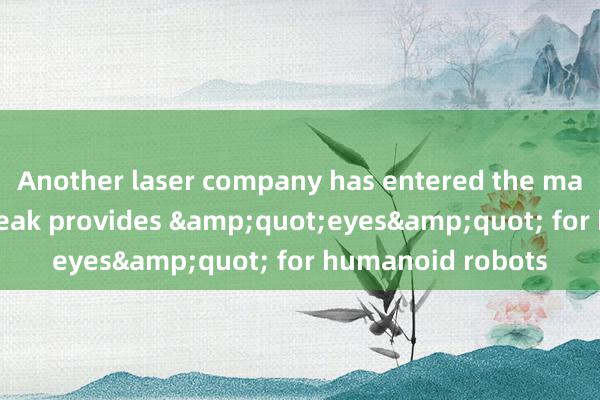The popularity of humanoid robots remains unabated. Recently, laser display module supplier Guangfeng Technology revealed that its technology has been applied to Midea Group's home service robot "Xiaowei". In the Midea "Xiaowei&qu...

The popularity of humanoid robots remains unabated. Recently, laser display module supplier Guangfeng Technology revealed that its technology has been applied to Midea Group's home service robot "Xiaowei".
In the Midea "Xiaowei" robot, the ALPD laser display module of Light Peak Technology plays a key role. This technology has become the "eye" of the robot "Xiao Wei" through characteristics such as ultra-short focus projection, automatic keystone correction, and high-brightness image quality, and has achieved two core breakthroughs. On the one hand, it is the ability to construct scenes, that is, the robot can move to any position to project high-definition images, up to 100 inches, instantly converting the home space into an immersive theater, game hall or interactive classroom;
On the other hand, human-computer interaction innovation, guides users' operations through dynamic projection and feedbacks on game interaction in real time, improving the emotional and practical value of service robots.
When a humanoid robot has "visual expression", this will become its differentiated competitiveness different from traditional service robots - imagine that if a user wants to query the navigation route or tomorrow's itinerary, when other humanoid robots can only broadcast one by one, a humanoid robot equipped with "visual expression" can immediately place the navigation path and itinerary on the wall or the ground.
The service robot market is still in its early stages of explosion, and the demand for segmented scenarios such as follow-up education, elderly care, and medical care will continue to be released. According to ABI Research, the global service robot market size will exceed US$130 billion in 2025.
The cooperation between Light Peak Technology and Midea is the first benchmark case for its core devices to enter the robot field, and it implies greater industrial logic: ALPD laser modules have the characteristics of miniaturization, low power consumption, high ambient light and anti-interference, and can be adapted to multiple robot scenarios such as home, commercial, and industrial.
Optopeak Technology has also invested large amounts of R&D expenses in cutting-edge fields such as ultra-small optical machines and AR optics. At the same time, it is also constantly making breakthroughs to build more competitive core devices in the laser industry. Its "technical reserve pool" lays the groundwork for the next round of upgrades to the robot industry.
Southern+Reporter Gao Xiaoping